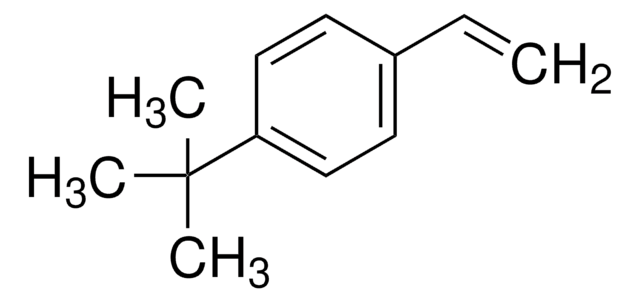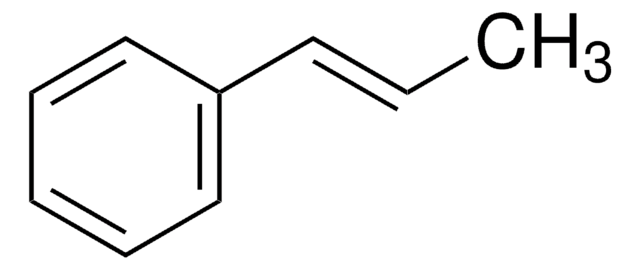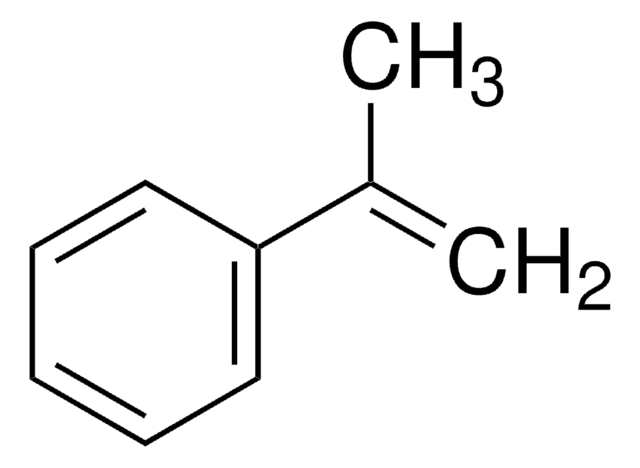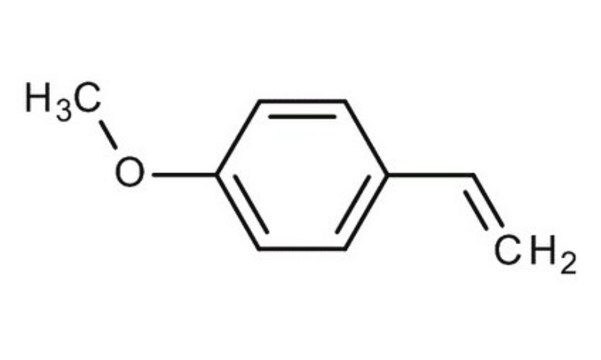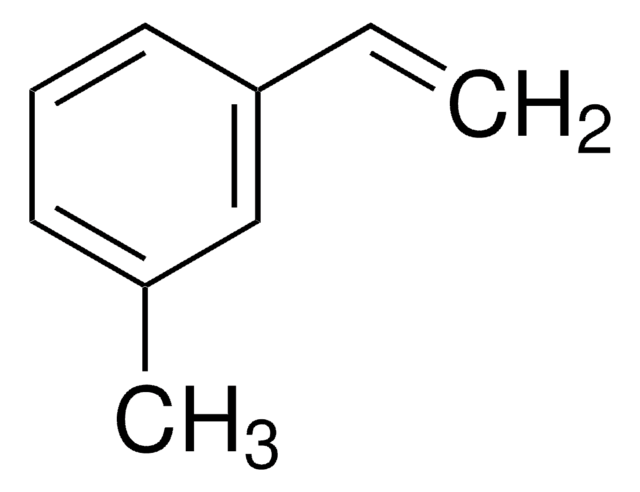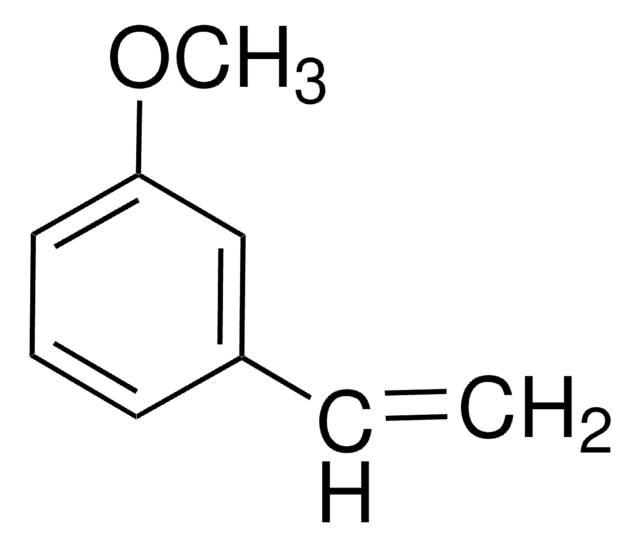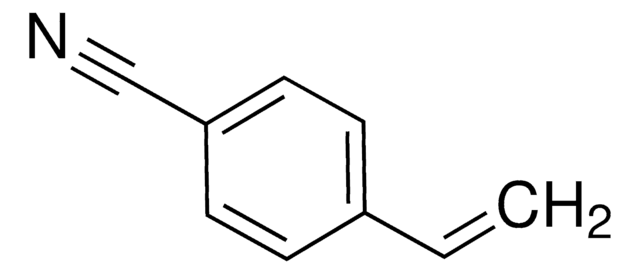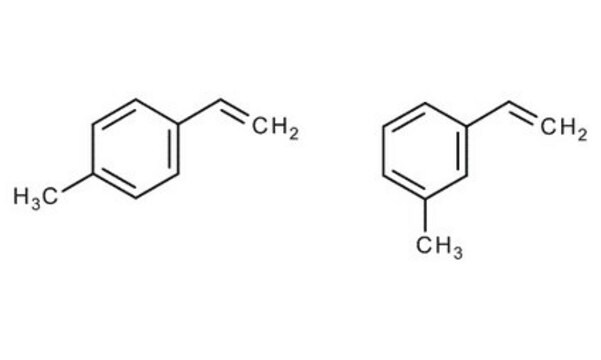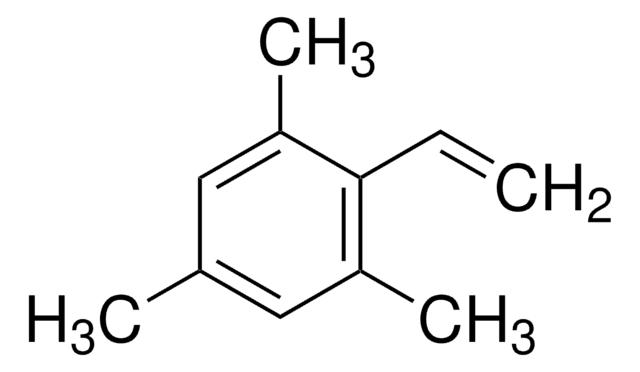Kluczowe dokumenty
M80806
4-Methylstyrene
96%, contains 3,5-di-tert-butylcatechol as inhibitor
Synonim(y):
4-Vinyltoluene
About This Item
Polecane produkty
ciśnienie pary
<1 mmHg ( 20 °C)
Poziom jakości
Próba
96%
Formularz
liquid
temp. samozapłonu
959 °F
zawiera
3,5-di-tert-butylcatechol as inhibitor
granice wybuchowości
5.3 %
współczynnik refrakcji
n20/D 1.542 (lit.)
bp
170-175 °C (lit.)
gęstość
0.897 g/mL at 25 °C (lit.)
temp. przechowywania
2-8°C
ciąg SMILES
Cc1ccc(C=C)cc1
InChI
1S/C9H10/c1-3-9-6-4-8(2)5-7-9/h3-7H,1H2,2H3
Klucz InChI
JLBJTVDPSNHSKJ-UHFFFAOYSA-N
Szukasz podobnych produktów? Odwiedź Przewodnik dotyczący porównywania produktów
Powiązane kategorie
Opis ogólny
Zastosowanie
Hasło ostrzegawcze
Danger
Zwroty wskazujące rodzaj zagrożenia
Zwroty wskazujące środki ostrożności
Klasyfikacja zagrożeń
Aquatic Chronic 2 - Asp. Tox. 1 - Flam. Liq. 3
Kod klasy składowania
3 - Flammable liquids
Klasa zagrożenia wodnego (WGK)
WGK 3
Temperatura zapłonu (°F)
113.0 °F
Temperatura zapłonu (°C)
45 °C
Środki ochrony indywidualnej
Eyeshields, Faceshields, Gloves, type ABEK (EN14387) respirator filter
Wybierz jedną z najnowszych wersji:
Masz już ten produkt?
Dokumenty związane z niedawno zakupionymi produktami zostały zamieszczone w Bibliotece dokumentów.
Klienci oglądali również te produkty
Produkty
The Heck reaction is the palladium catalyzed cross-coupling reaction between alkenes and aryl or vinyl halides (or triflates) to afford substituted alkenes.
Global Trade Item Number
| SKU | GTIN |
|---|---|
| M80806-100G | |
| M80806-10G | |
| M80806-500ML | 4061834062721 |
| M80806-100ML | 4061837835766 |
| M80806-10ML | 4061837835773 |
| M80806-500G |
Nasz zespół naukowców ma doświadczenie we wszystkich obszarach badań, w tym w naukach przyrodniczych, materiałoznawstwie, syntezie chemicznej, chromatografii, analityce i wielu innych dziedzinach.
Skontaktuj się z zespołem ds. pomocy technicznej